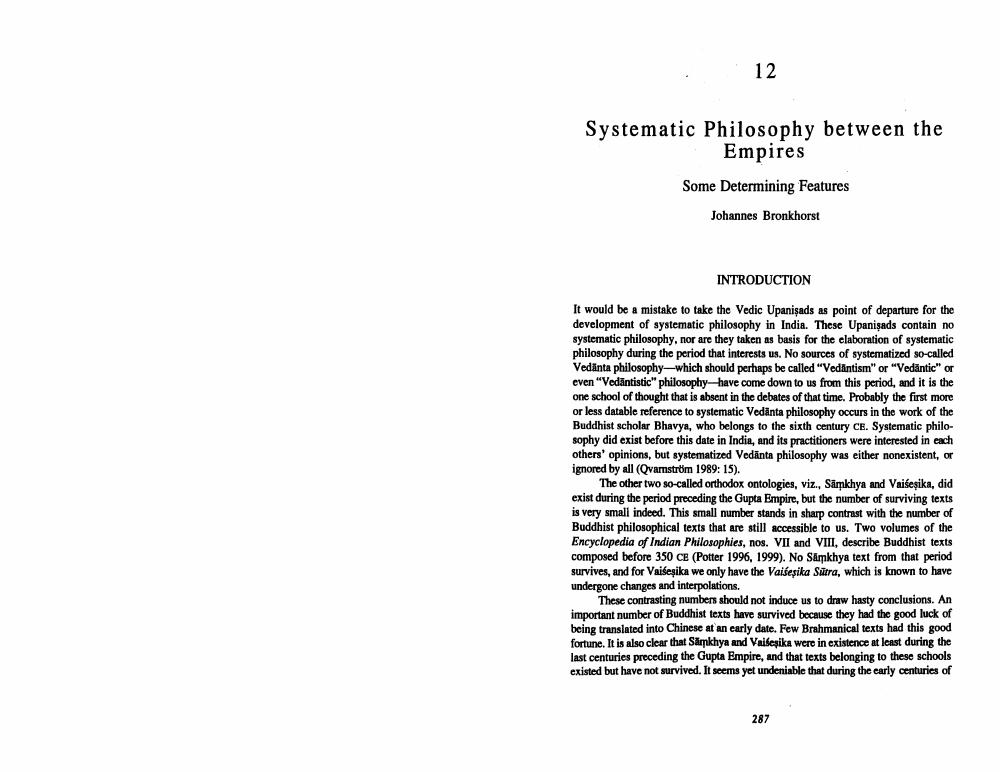Book Title: Systematic Philosophy Between The Empires Author(s): Johannes Bronkhorst Publisher: Johannes Bronkhorst View full book textPage 1
________________ . 12 Systematic Philosophy between the Empires Some Determining Features Johannes Bronkhorst INTRODUCTION It would be a mistake to take the Vedic Upanişads as point of departure for the development of systematic philosophy in India. These Upanişads contain no systematic philosophy, nor are they taken as basis for the elaboration of systematic philosophy during the period that interests us. No sources of systematized so-called Vedänta philosophy—which should perhaps be called "Vedāntism" or "Vedāntic" or even "Vedāntistic" philosophy-have come down to us from this period, and it is the one school of thought that is absent in the debates of that time. Probably the first more or less datable reference to systematic Vedanta philosophy occurs in the work of the Buddhist scholar Bhavya, who belongs to the sixth century CE. Systematic philosophy did exist before this date in India, and its practitioners were interested in each others' opinions, but systematized Vedānta philosophy was either nonexistent, or ignored by all (Qvarnström 1989: 15). The other two so-called orthodox ontologies, viz., Samkhya and Vaišeşika, did exist during the period preceding the Gupta Empire, but the number of surviving texts is very small indeed. This small number stands in sharp contrast with the number of Buddhist philosophical texts that are still accessible to us. Two volumes of the Encyclopedia of Indian Philosophies, nos. VII and VIII, describe Buddhist texts composed before 350 CE (Potter 1996, 1999). No Samkhya text from that period survives, and for Valsesika we only have the Vaisesika Sürra, which is known to have undergone changes and interpolations. These contrasting numbers should not induce us to draw hasty conclusions. An important number of Buddhist texts have survived because they had the good luck of being translated into Chinese at an early date. Few Brahmanical texts had this good fortune. It is also clear that Sarkhya and Vaibesika were in existence at least during the last centuries preceding the Gupta Empire, and that texts belonging to these schools existed but have not survived. It seems yet undeniable that during the early centuries of 287Page Navigation
1 2 3 4 5 6 7 8 9 10 11 12 ... 14
